ON THE highway south of Bloemfontein, Stuart Bray sits in the back seat of a safari truck on a December afternoon.
Bray and his driver have just picked up two Chinese government officials from the airport, and they’re wedged in next to him, their expressions hidden by sunglasses.
The truck approaches a 3m-high electric fence that stretches into the distance. A sign on a gate, marked Laohu Valley Reserve, warns that trespassers will be prosecuted.
The truck stops next to the only building in sight, a hut with cage doors, and Bray and the Chinese get out. Bray takes a breath. He feels the same pricks of excitement every time he sees the figure in the grass: a South China tiger, crisp black brush strokes on a coat of deep rust.
Her name is Madonna. She yawns and rolls onto her back with her paws in the air.
One of the Chinese officials, Lu Jun, squats down to take photos. The other, Zhang Dehui, points at Madonna’s face. "Three stripes and one vertical," he says. "This is a Chinese character, pronounced ‘wong’. It means king."
Bray runs the organisation that owns the Laohu reserve, and Madonna belongs to one of the most critically endangered species on Earth, one the World Wildlife Fund considers "functionally extinct".
None are believed to remain in the wild; perhaps 100 exist in captivity. Bray has 19 of them on his 30,000 hectares. He wants to re-wild the tigers, help them learn how to hunt and breed, and return them to the forests of southeastern China.
Lu and Zhang have flown in from the State Forestry Administration in Beijing to talk about bringing Bray’s tigers home.
Born and raised in the US, Bray lives in London and maintains Belgian citizenship. A former executive at Deutsche Bank, his natural habitat is Wall Street or the Square Mile of London, where he spent a career in structured finance.
IN 1998, Bray was on holiday in Zambia with his girlfriend, Li Quan, when their guides on a walking safari led them straight into a pack of lions. Worried Li might bolt, Bray grabbed her by the shirt collar.
Li hadn’t been scared. She’d always been fascinated by big cats and filmed the whole scene on her video camera. Born in China, she’s one year younger than Bray.
They met as graduate students at the Wharton School of the University of Pennsylvania in the late 1980s. Li later gave up a licensing job at Gucci to move to London and be with Bray, then a partner at Bankers Trust.
She needed something to occupy her while he was out creating tax-focused securitisation deals, and the safari episode gave her an idea. What if she could bring African-style ecotourism to China, creating a habitat for endangered tigers?
Bray was sceptical but vaguely supportive of conservation, and gave Li $150,000 to start a charity, Save China’s Tigers. Li spoke to someone she knew in the State Forestry Administration and found him surprisingly receptive to the idea of reintroducing the big cats.
Li and Bray had no conservation experience, and the big wildlife protection groups didn’t want to work with them. To boost credibility, Li approached John and Dave Varty, the South African big cat experts and film-makers who were operating a reserve where tourists pay to get close to tigers from inside cages mounted on trucks.
Li asked the Vartys to work with Save China’s Tigers, to help her find good land in SA and build a staff. Bray started to come around to Li’s project. "It began to feel like David and Goliath, and I had a lot of sympathy with David."
Bray had his own battles. In 1999, Deutsche Bank took over Bankers Trust, and he started to do battle over tax strategy with a rising executive, Anshu Jain. Bray was fired in 2001; Jain became co-CEO.
Bray tried to move his team to another company, but couldn’t pull it off; he decided he was finished with banking. "I was so sick of the politics and the infighting. I just didn’t want to do that any more."
AFTER two decades, he’d saved about $25m. Li remembers him being miserable. "He was lost and resentful," she says.
They got married in August 2001, and without a day job, Bray began to think more about the tiger idea he’d once thought was doomed.
He travelled to China with Dave Varty, where they researched the potential market for tiger tourism. Bray became convinced that saving the species could be not just virtuous, but also lucrative.
He bought an area in the Free State and agreed to lease it to the Varty brothers, who would run the reserve. Li talked the Chinese government into sending them South China tiger cubs that had been bred in zoos.
In 2002, Bray and Li were ready to fly to Beijing to finalise the plan. At the last moment, according to Bray, the Vartys tried to change the deal. Bray expelled them from the project and set up his own charitable trust to take the brothers’ place in their arrangement.
The parties sued and countersued. John Varty does not want to discuss the dispute in detail. "I’ve dealt with a lot of people in my life, a lot of rich people as well," he says. "Two of the most distrustful and evil people I have ever met in my life are Quan and Bray."
Li and Bray were on their own, with the first cubs due to arrive within a year. Li started trying to find scientists, rangers and vets.
In September 2003, handlers at the Shanghai Zoo put a pair of South China tiger cubs named Cathay and Hope into cages and flew them to Hong Kong. After another flight, the tigers arrived in SA, where Li introduced the cubs to journalists at the National Zoological Gardens in Pretoria.
"We have to take this drastic measure to save them from likely extinction," she told reporters.
...
WHEN Cathay and Hope arrived at Laohu, they refused to get off the concrete foundation at the gate. They’d never walked on grass before. Staff had to coax them into their enclosure.
The first time they put a live chicken in the enclosure, the cubs chased it around for a while until the bird got tired. "Once the chicken turned around and stared at them, they just stopped."
The team mixed chicken meat into zoo food to get the cats used to the taste, then introduced plucked carcasses, then dead birds with feathers on. Eventually, the cubs overcame their first live chicken.
Two more cubs arrived from China in late 2004. Madonna, who came then, got dehydrated after spending all day in the African sun. "There was shade available, but she was too naive to know how to use it," Bray says.
A four-year-old male called 327 arrived in 2007. He was used to life in zoos and never got comfortable outside. "You could see by the way he walked," Bray says. Finally, 327 found his mojo by mating with one of the females; then, pumped up with macho pride, he picked a fight with another male and lost. His skeleton is mounted in a glass case in the reserve lodge.
The tigers were breeding, and the project needed more fences for new enclosures, as well as more antelope for hunting practice.
Just when the project needed it most, there was an unexpected windfall. While Bray was fighting with Deutsche Bank over his options, the bank put out a news release. Bray claimed it implied his old division was caught up in a US tax probe, which wasn’t the case, and he sued for libel.
The suit was settled out of court. In 2009, he arranged for Deutsche Bank to pay £20m to a Save China’s Tigers charitable trust.
Amid the lawsuits, the money troubles, and the difficulty of what they were attempting, Li and Bray’s relationship began to rupture. Li saw herself as the charity’s figurehead, but her style irritated Bray and he removed her from the charity in 2012. She filed for divorce in London 10 days later. They’ve barely spoken since.
Li has since started her own charity, China Tiger Revival.
...
ON THE second day of the State Forestry Association’s visit to the reserve, Zhang and Lu rise early to watch the tigers being fed. Although they mostly subsist on freshly shot game, they’re learning to hunt. One of the males once killed an eland and spent a week chewing on it. The tigers have also eaten aardvarks, baboons and porcupines, and the mothers are passing these skills on to their cubs.
In Madonna’s area, one of the rangers tosses a dead antelope over the fence. The tiger bounds up, snatches the animal by the neck, and carries it a few yards. She licks the fur off with her abrasive tongue, then bites into the rump.
Later that evening, Bray’s staff sets up a projector screen in the lounge so he can give a presentation to his Chinese guests.
Bray describes a site in southwest China, the Qichong National Nature Reserve, as an ideal home for the tigers. It is primal forest, surrounded on three sides by mountains and a river, remote and sparsely populated, but with good enough transport links to support ecotourism, he says. He’s signed a provisional agreement with local officials and is negotiating with the provincial government.
Zhang listens carefully before responding. More than a decade has passed since Chinese zoos first loaned Bray and Li their tiger cubs, Zhang says, and there’s pressure to bring them home.
The question is how. One option is to recreate Laohu in China so the animals can acclimatise to a forested environment and then be released later — an interim location, in other words, at a modest size.
Bray frowns and cracks his knuckles. The suggestion is far short of his vision of tigers returning to a pristine wilderness. "At great personal cost, I’ve lived up to my commitments," he says. "I expect China to do the same.
Zhang replies calmly, "The Western way — frankly speaking, we don’t think it will work in China."
The argument over the tigers’ fate, and who will pay for it, continues into the evening, as Bray and Zhang walk off to sit in near-darkness at an outdoor table. Above the sound of crickets and springbok steak sizzling on the braai, Bray can be heard shouting, "This is my legacy."
Bloomberg


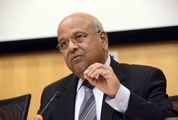
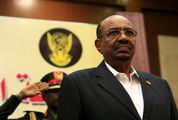

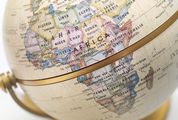


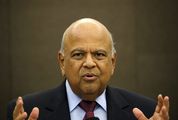





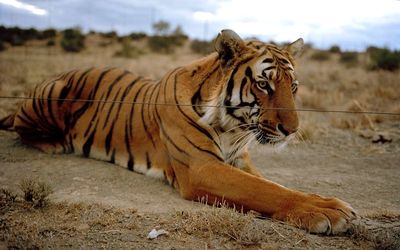




Change: -0.42%
Change: -0.35%
Change: -0.17%
Change: 0.14%
Change: -2.58%
Data supplied by Profile Data
Change: -0.56%
Change: 0.13%
Change: -0.42%
Change: 0.00%
Change: -0.18%
Data supplied by Profile Data
Change: 0.09%
Change: 0.09%
Change: 0.11%
Change: 0.14%
Change: 0.24%
Data supplied by Profile Data
Change: 0.02%
Change: 0.00%
Change: 0.07%
Change: -0.35%
Change: -0.54%
Data supplied by Profile Data